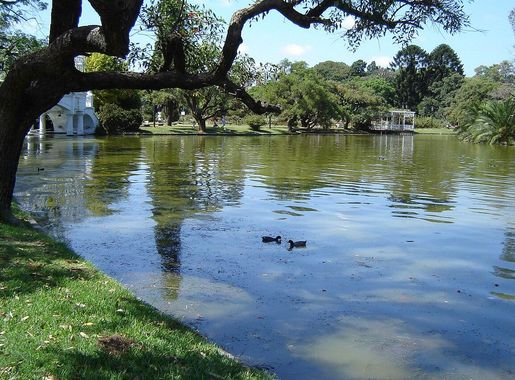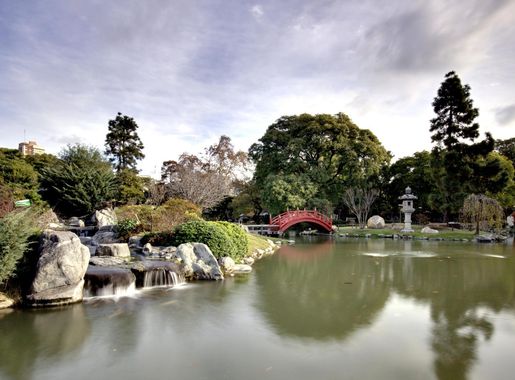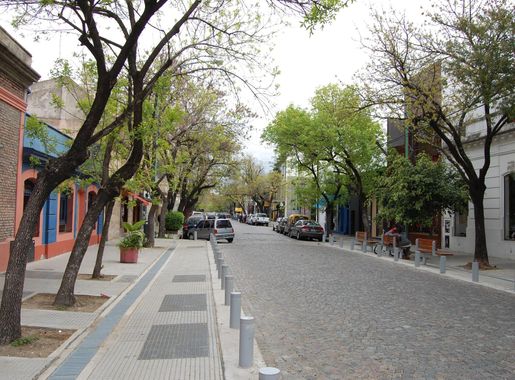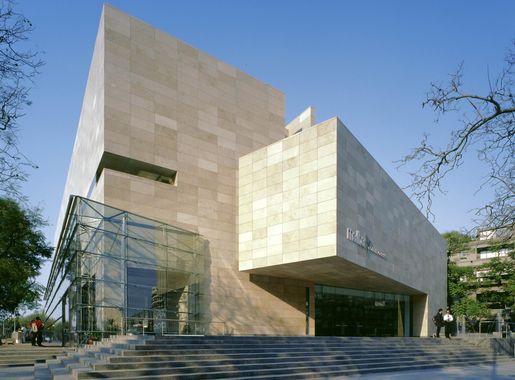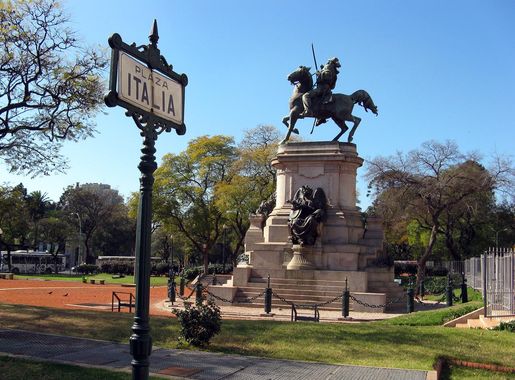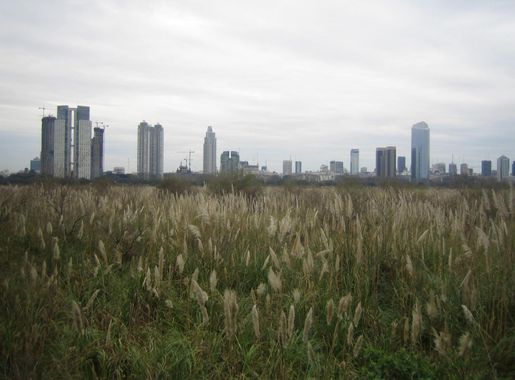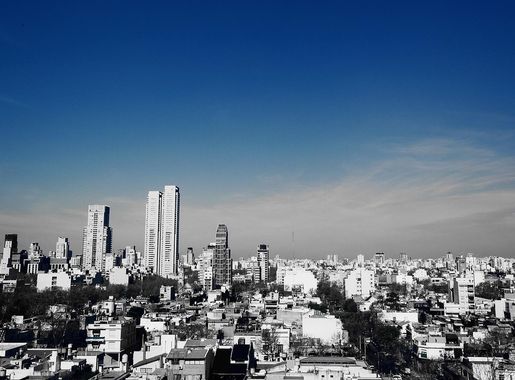
Palermo: The Heartbeat of Buenos Aires
Discover Palermo: Buenos Aires' largest neighborhood, brimming with vibrant culture, stunning parks, trendy boutiques, and an electrifying nightlife.
Palermo is the largest and one of the most vibrant neighborhoods in Buenos Aires. Known for its lush parks, trendy boutiques, and lively nightlife, it offers a dynamic mix of culture and leisure that appeals to all types of travelers. The area is divided into smaller districts, each with its unique charm, such as Palermo Soho, Palermo Hollywood, and Palermo Chico. Palermo Soho is famous for its bohemian vibe, with cobblestone streets lined with cafes, independent shops, and street art. It's a paradise for those who love fashion and creativity. On weekends, Plaza Serrano becomes a bustling market where local artisans sell their crafts and designers showcase their latest creations. In contrast, Palermo Hollywood is known for its modern flair, filled with chic restaurants, trendy bars, and television studios. This part of Palermo is perfect for foodies and nightlife enthusiasts. As the sun sets, the area comes alive with music and dancing, making it an excellent spot to experience Buenos Aires' famous nightlife. For a more tranquil experience, Palermo Chico offers beautiful mansions and embassies, along with the expansive Bosques de Palermo. This park is an urban oasis, featuring rose gardens, lakes, and shaded pathways perfect for a leisurely stroll or a bike ride. Nearby, the Buenos Aires Eco-Park and the Japanese Garden provide serene environments to relax and connect with nature. Palermo seamlessly blends old-world charm with modern sophistication, making it a must-visit destination for anyone exploring Buenos Aires.
Local tips in Palermo
- Visit Plaza Serrano on weekends for unique artisan crafts and designer clothes.
- Reserve a table in advance at popular Palermo Hollywood restaurants to avoid long waits.
- Rent a bike to explore the sprawling Bosques de Palermo and its scenic trails.
- Check out the street art around Palermo Soho for a colorful and artistic experience.
- Visit the Japanese Garden early in the morning to enjoy it with fewer crowds.
Palermo: The Heartbeat of Buenos Aires
Palermo is the largest and one of the most vibrant neighborhoods in Buenos Aires. Known for its lush parks, trendy boutiques, and lively nightlife, it offers a dynamic mix of culture and leisure that appeals to all types of travelers. The area is divided into smaller districts, each with its unique charm, such as Palermo Soho, Palermo Hollywood, and Palermo Chico. Palermo Soho is famous for its bohemian vibe, with cobblestone streets lined with cafes, independent shops, and street art. It's a paradise for those who love fashion and creativity. On weekends, Plaza Serrano becomes a bustling market where local artisans sell their crafts and designers showcase their latest creations. In contrast, Palermo Hollywood is known for its modern flair, filled with chic restaurants, trendy bars, and television studios. This part of Palermo is perfect for foodies and nightlife enthusiasts. As the sun sets, the area comes alive with music and dancing, making it an excellent spot to experience Buenos Aires' famous nightlife. For a more tranquil experience, Palermo Chico offers beautiful mansions and embassies, along with the expansive Bosques de Palermo. This park is an urban oasis, featuring rose gardens, lakes, and shaded pathways perfect for a leisurely stroll or a bike ride. Nearby, the Buenos Aires Eco-Park and the Japanese Garden provide serene environments to relax and connect with nature. Palermo seamlessly blends old-world charm with modern sophistication, making it a must-visit destination for anyone exploring Buenos Aires.
Iconic landmarks you can’t miss
Obelisco
Discover the Obelisco, a historic landmark in Buenos Aires, symbolizing the city's culture and offering breathtaking views for every visitor.

Jardín Japonés
Explore the serene beauty of Jardín Japonés, a tranquil Japanese garden in the heart of Buenos Aires, perfect for relaxation and cultural immersion.
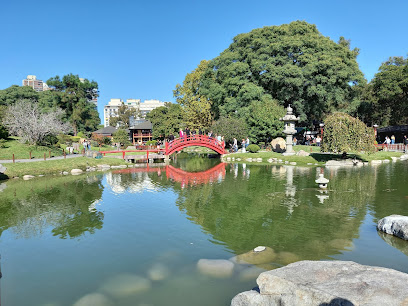
Plaza Italia
Explore the lush landscapes and cultural heritage at Plaza Italia, a tranquil park in Buenos Aires' vibrant Palermo district, perfect for relaxation and exploration.
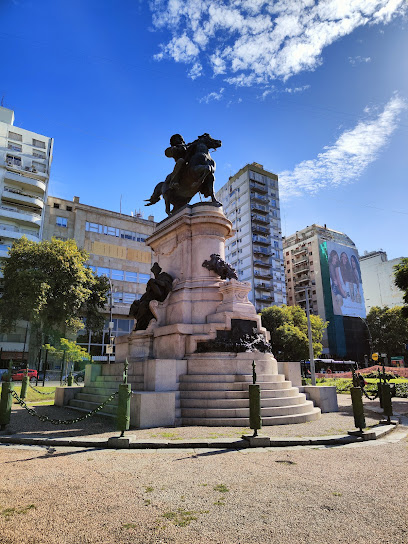
Paseo El Rosedal Garden
Experience the stunning beauty of Paseo El Rosedal in Buenos Aires, a vibrant garden filled with roses, lakes, and serene walking paths.
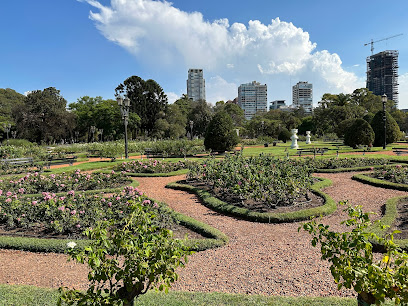
Plaza Serrano
Explore the lively Plaza Serrano in Buenos Aires, a cultural hub featuring a flea market, local art, and a vibrant community atmosphere.
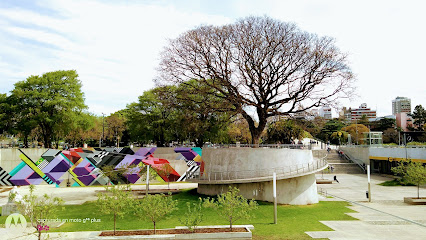
Plaza Inmigrantes de Armenia
Discover tranquility and culture at Plaza Inmigrantes de Armenia, a beautiful city park in the heart of Buenos Aires' Palermo district.
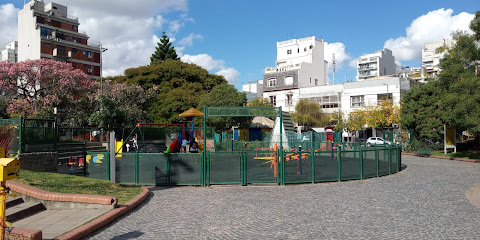
Sicily Square
Explore the serene Sicily Square in Buenos Aires, a picturesque park filled with lush gardens, sculptures, and a vibrant atmosphere perfect for relaxation.
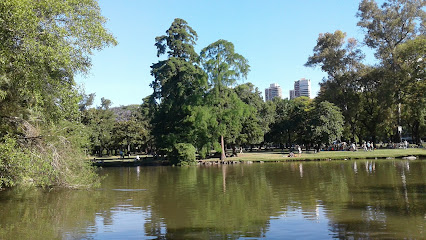
Plazoleta Güemes
Discover the serene beauty of Plazoleta Güemes in Buenos Aires: a tranquil park perfect for relaxation and cultural exploration.
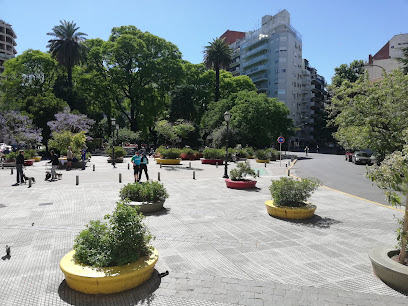
Germany Square
Explore the tranquil beauty of Germany Square in Buenos Aires, a lush park perfect for relaxation, culture, and family outings amidst the city’s vibrant atmosphere.
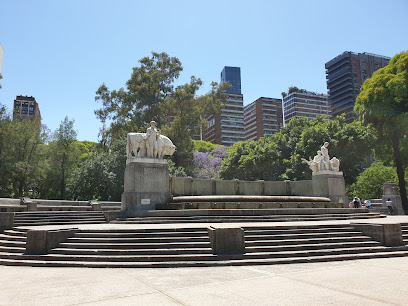
Monument to the Magna Carta and the Four Regions
Discover the Monument to the Magna Carta and the Four Regions, a historic tribute in Buenos Aires' Palermo that celebrates freedom and democracy.
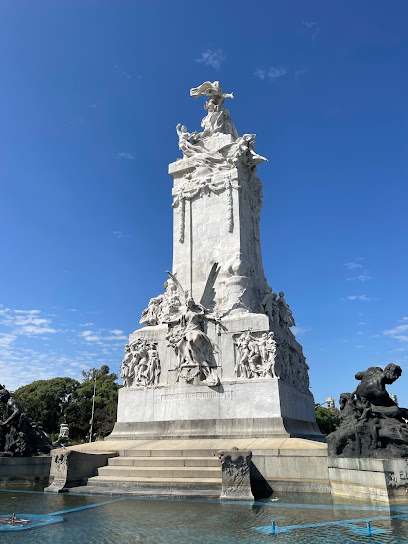
Unmissable attractions to see
Jardín Japonés
Experience tranquility at Jardín Japonés, a stunning Japanese garden in Buenos Aires filled with lush landscapes, serene water features, and cultural charm.
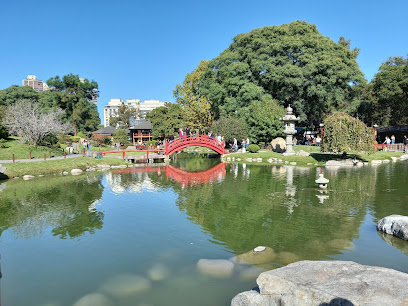
Jardín Botánico Carlos Thays
Explore the lush beauty of Jardín Botánico Carlos Thays, a serene escape in Buenos Aires featuring diverse plant species and stunning landscapes.
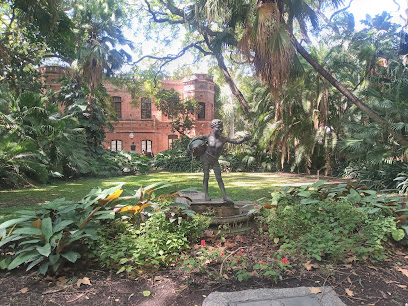
Tres de Febrero Park
Discover the lush landscapes and cultural treasures of Tres de Febrero Park, a green oasis in the heart of Buenos Aires.
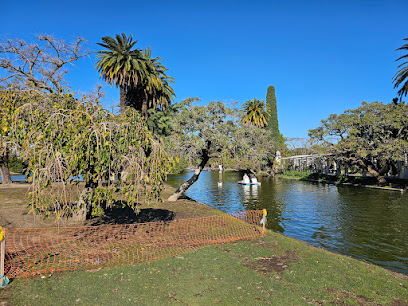
Museo de Arte Latinoamericano de Buenos Aires
Discover the vibrant world of Latin American art at MALBA, a cultural gem in Buenos Aires showcasing modern and contemporary masterpieces.
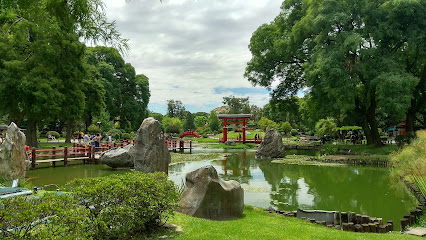
3 de Febrero Park
Explore the lush landscapes of 3 de Febrero Park, Buenos Aires - a tranquil haven filled with lakes, gardens, and vibrant culture.
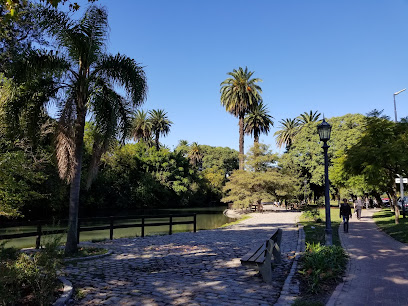
Sicily Square
Discover the serene beauty of Sicily Square, a lush park in Palermo, Buenos Aires, perfect for relaxation and leisure amidst vibrant city life.
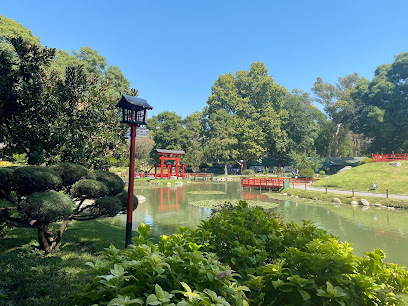
Plazoleta Güemes
Explore the tranquil beauty of Plazoleta Güemes, a charming park in Palermo, Buenos Aires, perfect for relaxation, picnics, and local culture.
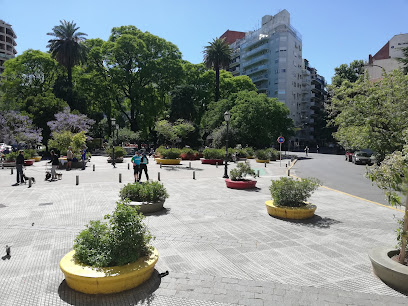
Museo Evita
Explore the legacy of Eva Perón at Museo Evita, a captivating museum in Buenos Aires dedicated to one of Argentina's most iconic figures.
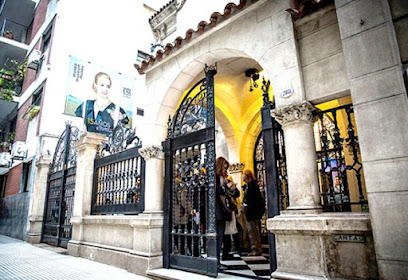
Murales artísticos del Soho
Discover the vibrant street art of Soho, Buenos Aires, where creativity and culture come alive through breathtaking murals and artistic expressions.
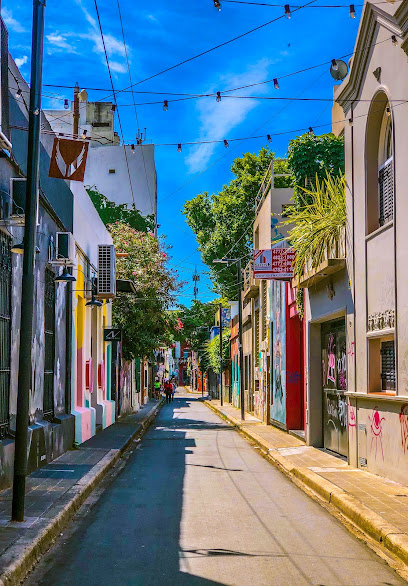
Elegantes de Palermo
Explore the vibrant Elegantes de Palermo in Buenos Aires, where art, culture, and gastronomy come together in a lively atmosphere.
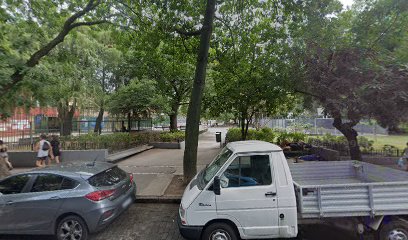
Essential places to dine
La Cabrera
Discover La Cabrera in Buenos Aires for an unforgettable Argentinian barbecue experience with top-quality meats and vibrant local culture.
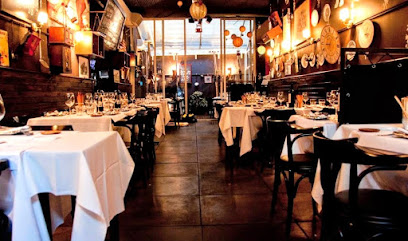
El Preferido de Palermo
Experience the essence of Argentine cuisine at El Preferido de Palermo, where tradition meets modernity in every exquisite dish.
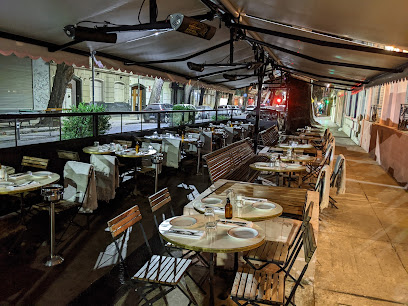
La Escondida
Experience authentic Argentinian flavors at La Escondida in Palermo - a culinary haven for food lovers.
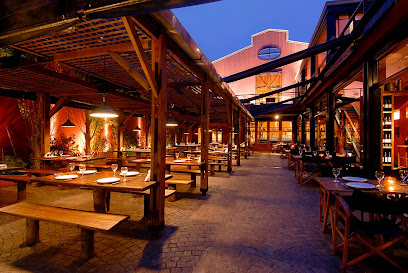
Hierro Parrilla Palermo
Discover authentic Argentine barbecue at Hierro Parrilla in Palermo—where every bite tells a story of tradition and flavor.
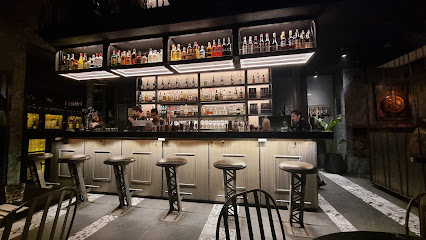
Casa Cavia
Experience the elegance of Casa Cavia: where eclectic cuisine meets artistic flair in Buenos Aires' Palermo district.
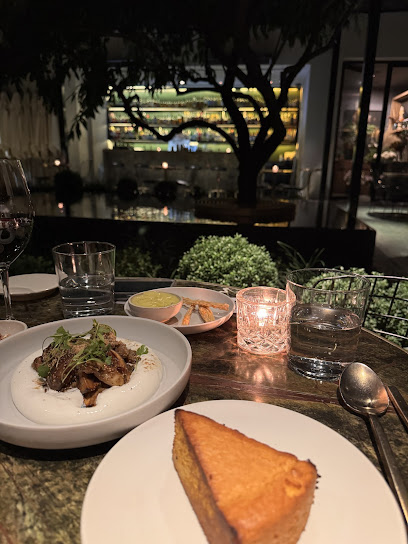
Calden del soho Grill
Experience authentic Argentinian grilling at Calden del Soho Grill in Palermo - where flavor meets tradition.
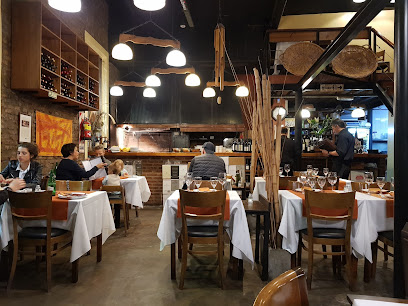
Il Matterello Palermo
Experience authentic Italian cuisine at Il Matterello in Palermo - where tradition meets modern culinary artistry.
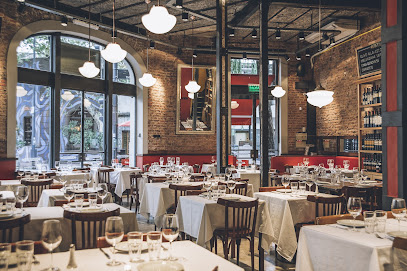
Minga Parrilla
Experience authentic Argentinian cuisine at Minga Parrilla in Palermo - where every meal tells a story.
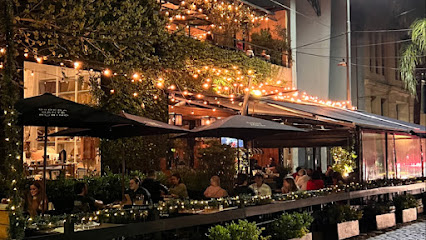
Cabernet
Experience the essence of Argentinian cuisine at Cabernet in Buenos Aires' vibrant Palermo district, where exquisite flavors meet elegant dining.
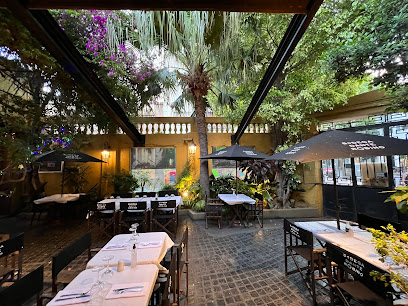
À Nos Amours
Experience the exquisite fusion of French cuisine and Argentine flavors at À Nos Amours in Palermo, Buenos Aires.
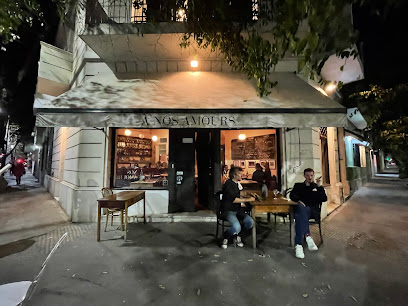
Markets, malls and hidden boutiques
Alto Palermo
Explore Alto Palermo, Buenos Aires' premier shopping destination with top brands, diverse dining, and vibrant cultural experiences.
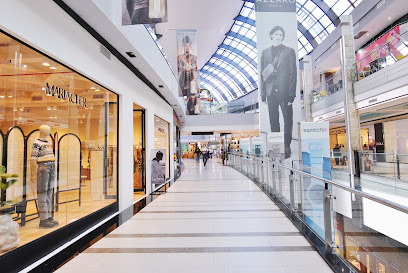
Alcorta Mall
Discover shopping, dining, and entertainment at Alcorta Mall, the ultimate retail destination in Buenos Aires for tourists and locals alike.
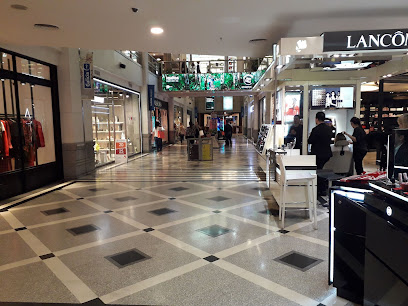
Outlet Palermo
Outlet Palermo: Unleash your shopping spirit in Buenos Aires' vibrant outlet mall, combining fashion, food, and culture in one unforgettable experience.
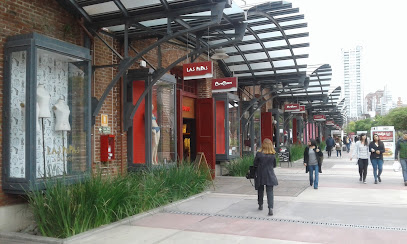
Mil Gracias Objetos Merecidos
Explore Mil Gracias Objetos Merecidos in Palermo, Buenos Aires - your destination for unique home decor, furniture, and thoughtful gifts.
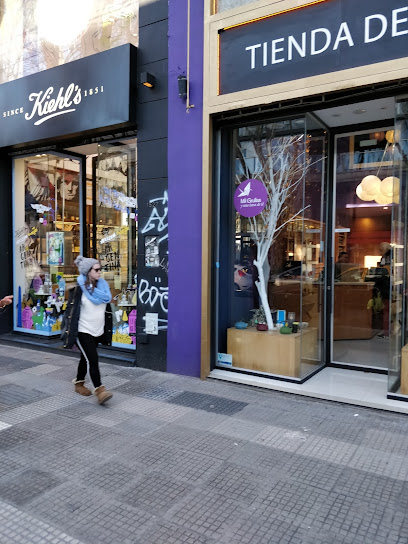
I Love Gifts
Discover unique treasures and local artisan crafts at I Love Gifts in Palermo, Buenos Aires – your go-to destination for unforgettable souvenirs.

animaná
Explore Animaná, a unique clothing store in Buenos Aires' Palermo, showcasing authentic Argentine fashion and local artistry.

Jaleo
Unearth unique fashion finds at Jaleo, a charming second-hand store in Buenos Aires' Palermo Hollywood, specializing in children's and women's clothing.
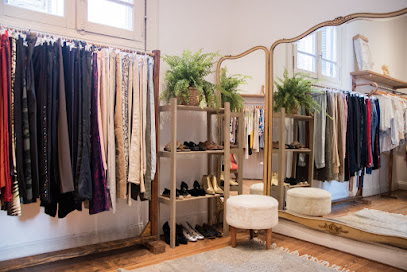
Tienda TKM Palermo
Explore Tienda TKM in Palermo for a unique shopping experience filled with artisanal gifts, cutlery, and musical instruments that embody Argentine culture.
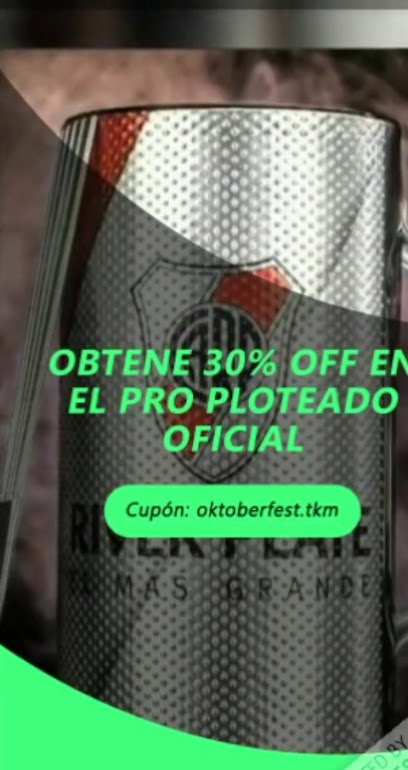
Panorama Store
Explore the vibrant fashion scene at Panorama Store in Buenos Aires, where unique styles and local flair converge for an unforgettable shopping experience.
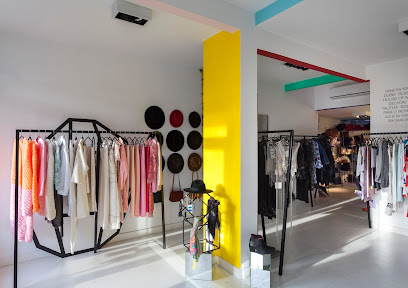
Shop
Explore the shopping paradise in Palermo, Buenos Aires, where local flavor meets international style in a vibrant mall experience.
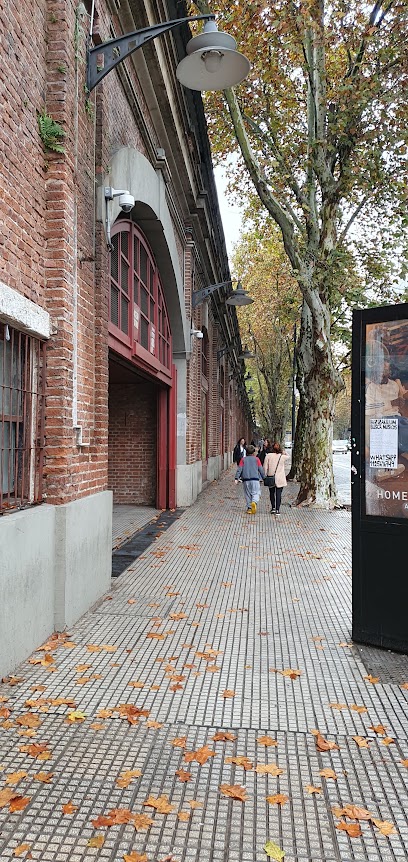
Essential bars & hidden hideouts
Casa Temple
Experience the vibrant nightlife of Buenos Aires at Casa Temple, where craft beer and gourmet burgers come together in a lively atmosphere.
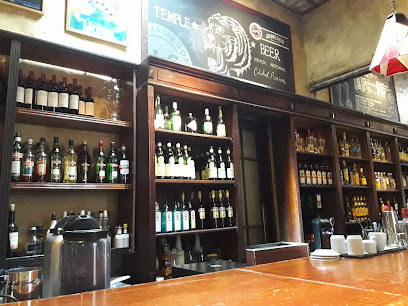
Blest Palermo
Discover the vibrant atmosphere of Blest Palermo, a top brewpub in Buenos Aires, offering an array of craft beers and delicious food pairings.
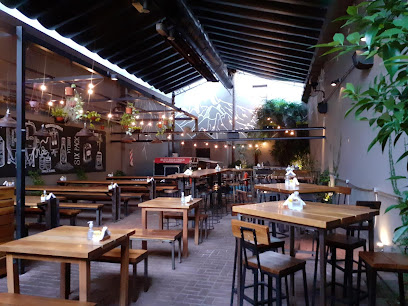
Behind Bar
Experience the vibrant nightlife of Buenos Aires at Behind Bar, a cozy haven for cocktail lovers in Palermo's heart.
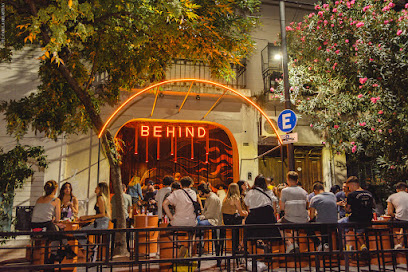
Backroom Bar
Experience the vibrant nightlife of Buenos Aires at Backroom Bar, where exquisite cocktails and live music come together in a stylish setting.
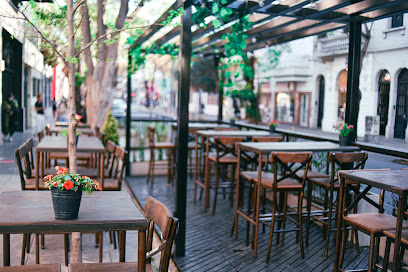
Tres Monos
Explore Tres Monos in Buenos Aires for a vibrant bar experience with innovative cocktails and an inviting atmosphere, perfect for nightlife enthusiasts.

Frank's
Experience the vibrant nightlife at Frank's, a unique bar in Buenos Aires offering artisanal cocktails and beauty services in a trendy setting.
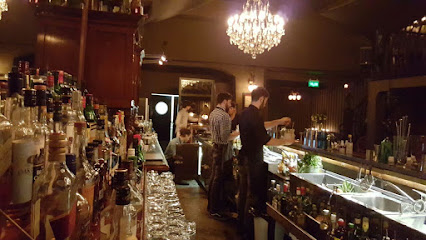
The Wine Bar
Experience the best of Argentine cuisine and an extensive wine selection at The Wine Bar in Palermo, Buenos Aires.
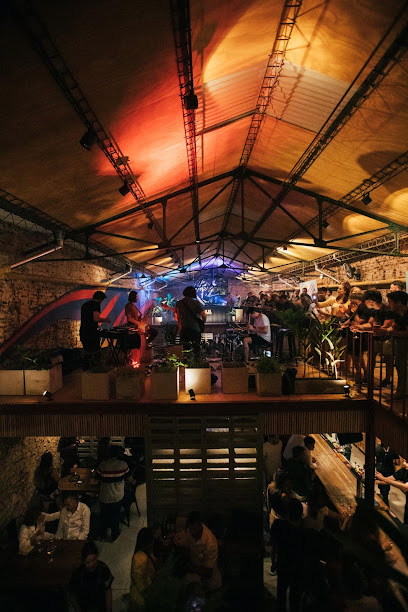
Baradentro Gin Tonic Club
Discover the vibrant nightlife of Buenos Aires at Baradentro Gin Tonic Club, a cocktail haven for gin lovers and social butterflies.

Snailey Walker
Experience the vibrant cocktail culture of Buenos Aires at Snailey Walker in Palermo Hollywood, where creativity meets flavor in every drink.
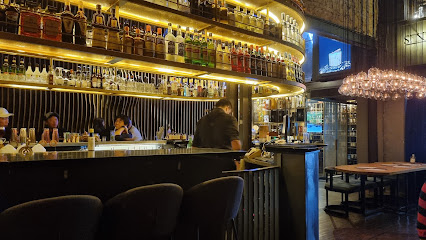
Soler Street Bar
Experience the vibrant nightlife at Soler Street Bar in Palermo Hollywood, Buenos Aires, where cocktails and ambiance create unforgettable moments.
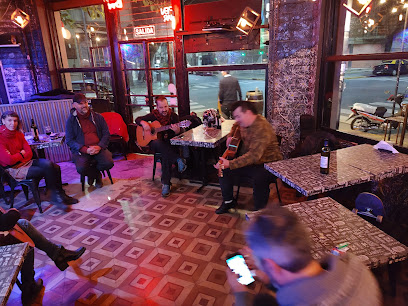
Local Phrases
-
- HelloHola
[O-la] - GoodbyeAdiós
[A-di-oz] - YesSí
[See] - NoNo
[No] - Please/You're welcomePor favor
[Por fa-vor] - Thank youGracias
[Gra-sias] - Excuse me/SorryPerdón
[Per-don] - How are you?¿Cómo estás?
[Ko-mo es-tas] - Fine. And you?Bien. ¿Y tú?
[Byen. Ee too] - Do you speak English?¿Hablas inglés?
[A-blas in-gles] - I don't understandNo entiendo
[No en-tien-do]
- HelloHola
-
- I'd like to see the menu, pleaseQuisiera ver el menú, por favor
[Key-syai-ra ver el me-nu, por fa-vor] - I don't eat meatNo como carne
[No ko-mo kar-ne] - Cheers!¡Salud!
[Salud] - I would like to pay, pleaseQuisiera pagar, por favor
[Key-syai-ra pa-gar, por fa-vor]
- I'd like to see the menu, pleaseQuisiera ver el menú, por favor
-
- Help!¡Ayuda!
[A-yu-da] - Go away!¡Vete!
[Ve-te] - Call the Police!¡Llama a la policía!
[Ya-ma a la po-li-si-a] - Call a doctor!¡Llama a un médico!
[Ya-ma a un me-di-ko] - I'm lostEstoy perdido
[Es-toi per-di-do] - I'm illEstoy enfermo
[Es-toi en-fer-mo]
- Help!¡Ayuda!
-
- I'd like to buy...Quisiera comprar...
[Key-syai-ra kom-prar] - I'm just lookingSolo estoy mirando
[So-lo es-toi mi-ran-do] - How much is it?¿Cuánto cuesta?
[Kwan-to kwe-sta] - That's too expensiveEsto es muy caro
[Es-to es mui ka-ro] - Can you lower the price?¿Puedes bajar el precio?
[Pwe-des ba-har el pre-syo]
- I'd like to buy...Quisiera comprar...
-
- What time is it?¿Qué hora es?
[Ke o-ra es] - It's one o'clockEs la una
[Es la u-na] - Half past (10)Diez y media
[Diez i me-dia] - MorningMañana
[Ma-nya-na] - AfternoonTarde
[Tar-de] - EveningNoche
[No-che] - YesterdayAyer
[Ai-er] - TodayHoy
[Hoy] - TomorrowMañana
[Ma-nya-na] - 1Uno
[U-no] - 2Dos
[Dos] - 3Tres
[Tres] - 4Cuatro
[Cua-tro] - 5Cinco
[Sin-ko] - 6Seis
[Seis] - 7Siete
[Sye-te] - 8Ocho
[O-cho] - 9Nueve
[Nwe-ve] - 10Diez
[Diez]
- What time is it?¿Qué hora es?
-
- Where's a/the...?¿Dónde está...?
[Don-de es-ta] - What's the address?¿Cuál es la dirección?
[Kwal es la di-rek-syon] - Can you show me (on the map)?¿Puedes mostrarme (en el mapa)?
[Pwe-des mos-trar-me (en el ma-pa)] - When's the next (bus)?¿Cuándo es el próximo (colectivo)?
[Kwan-do es el pro-si-mo (ko-lek-ti-vo)] - A ticket (to ....)Un boleto (a ....)
[Un bo-le-to (a)]
- Where's a/the...?¿Dónde está...?
History of Palermo
-
Palermo, originally a rural area, was established during the Spanish colonial period in the late 16th century. The name 'Palermo' was given in homage to the Italian city of Palermo and was primarily a space for noble estates and agricultural activities. By the 18th century, it began to develop as a residential area for the elite of Buenos Aires, reflecting the early social stratification of the region.
-
The mid-19th century marked a significant transformation for Palermo with the arrival of European immigrants, particularly Italians and Spaniards. This influx led to an increase in population and the development of new neighborhoods. The establishment of the Parque Tres de Febrero in 1875, designed by the French landscape architect Carlos Thays, created a central green space that became a focal point for leisure and culture in the city.
-
During the early 20th century, Palermo evolved into a vibrant cultural hub. The neighborhood witnessed the construction of grand buildings, theaters, and cafes, becoming a gathering place for artists and intellectuals. This era also saw the establishment of the Botanical Garden and the Zoo, both of which contributed to the neighborhood's reputation as a center for leisure and education.
-
Following World War II, Palermo experienced rapid urbanization and modernization. The construction of high-rise buildings and the expansion of public transportation connected Palermo more closely with the rest of Buenos Aires. This shift marked a transition from a primarily residential area to a bustling urban center, attracting a diverse population drawn by economic opportunities.
-
In recent decades, Palermo has emerged as one of Buenos Aires' trendiest neighborhoods, known for its chic boutiques, artistic spaces, and vibrant nightlife. The gentrification of areas like Palermo Soho and Palermo Hollywood has transformed the neighborhood into a cultural and culinary hotspot, while still preserving its historical charm through the restoration of classic buildings and parks.
Palermo Essentials
-
Palermo is easily accessible from other neighborhoods in Buenos Aires. The Subte (metro) Line D connects Palermo to the city center, with stops at key locations such as Plaza Italia and Palermo station. Buses are also a convenient option, with numerous lines running through the area. Taxis and ride-sharing services like Uber are widely available and provide a direct route to your destination within the neighborhood.
-
Palermo is a sprawling neighborhood, and the best way to explore it is on foot or by bicycle. The city has a bike-sharing program called EcoBici, offering free bikes for short-term use. The Subte and buses are reliable options for longer distances. Additionally, many streets in Palermo have designated bike lanes, making cycling a popular choice among locals.
-
Palermo is generally considered a safe neighborhood, but like any urban area, visitors should remain vigilant. Areas around Plaza Serrano and Palermo Soho are popular but can become crowded. Avoid walking alone late at night in less populated areas, especially around Villa Crespo and certain parts of Villa Urquiza, which have higher crime rates. Always be cautious with your belongings in crowded places.
-
In emergencies, dial 911 for police, fire, or medical assistance. It is essential to have travel insurance that covers medical needs. Pharmacies are plentiful in Palermo, and most have staff who can assist with basic health inquiries. For serious medical emergencies, the Hospital Italiano is one of the best facilities nearby.
-
Fashion: Do wear comfortable and stylish clothes, as Palermo is known for its trendy vibe. Don't wear overly flashy jewelry to avoid attracting unwanted attention. Religion: Do respect the customs of local religious sites. Public Transport: Do offer your seat to elderly passengers. Don't engage in loud conversations on public transport. Greetings: Do greet with a friendly 'Hola' and a smile. Eating & Drinking: Do try the local parrillas and cafes. Don't consume alcohol in public parks, as it is prohibited.
-
To experience Palermo like a local, visit the many parks, such as Bosques de Palermo, for a leisurely afternoon. Explore the local markets, like Mercado de las Pulgas, for unique finds. Try to join a milonga for tango dancing, as it is a cherished local activity. Engage with locals in cafes, as they often enjoy sharing recommendations and insights about the area.
-
Palermo is known for its vibrant arts scene, characterized by numerous galleries and street art. Attend local festivals and events, such as the Feria de Mataderos, to immerse yourself in Argentine culture. Understanding a few key phrases in Spanish can enhance your interactions and experiences with locals.
-
When dining in Palermo, it is customary to greet the staff and say goodbye when leaving. Sharing food is common, so if dining with others, consider ordering a variety of dishes to share. Tipping is appreciated, typically around 10% of the bill.
Nearby Cities to Palermo
-
Things To Do in Colonia del Sacramento
-
Things To Do in La Plata
-
Things To Do in Fray Bentos
-
Things To Do in Montevideo
-
Things To Do in Rosario
-
Things To Do in Maldonado
-
Things To Do in Punta del Este
-
Things To Do in Mar del Plata
-
Things To Do in Tacuarembó
-
Things To Do in Córdoba
-
Things To Do in Encarnacion
-
Things To Do in Carmen del Parana
-
Things To Do in San Rafael
-
Things To Do in Mendoza
-
Things To Do in Villarrica

